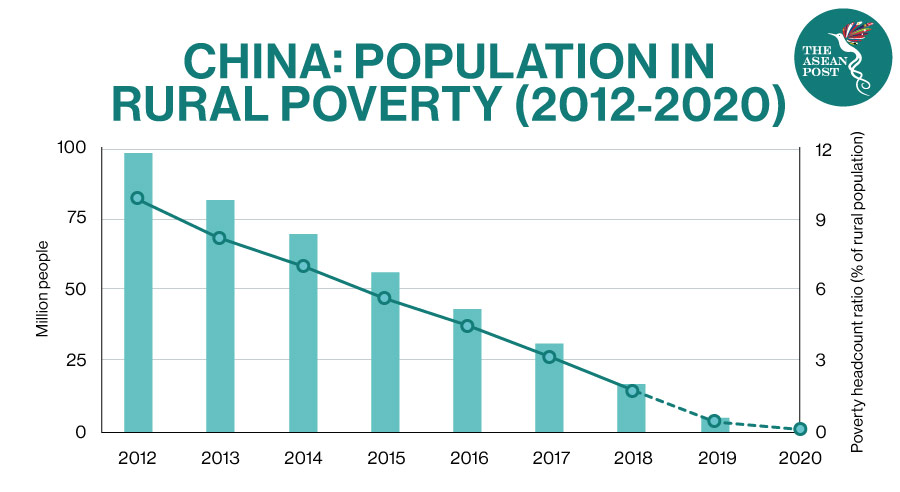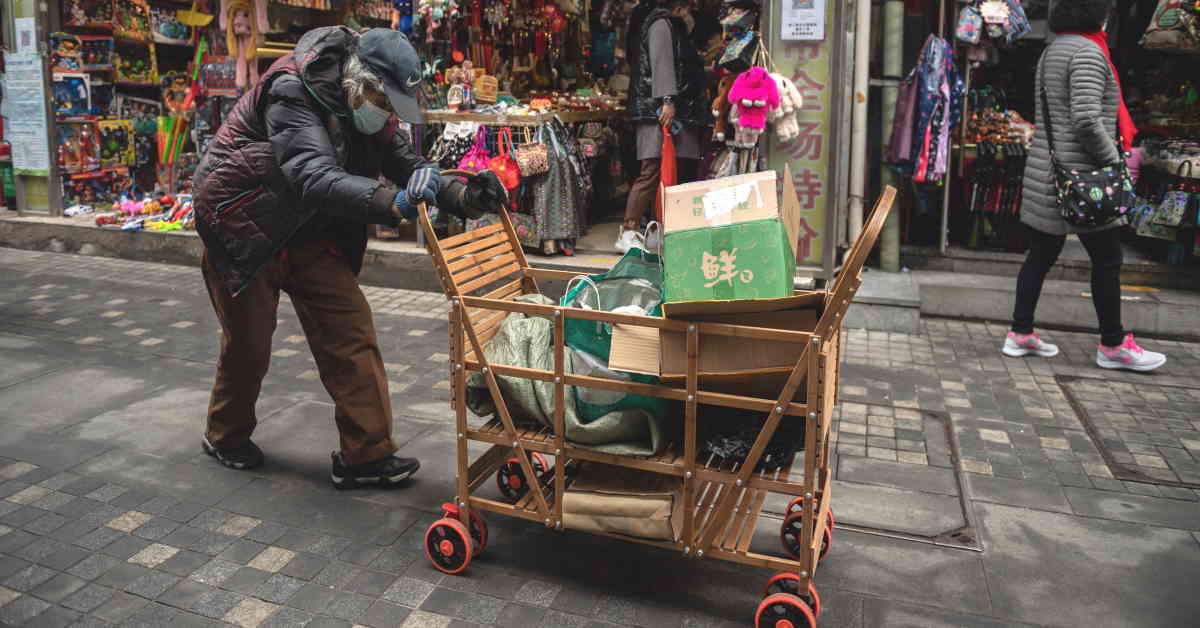Today, estimates for global poverty are approximately 8.6 percent of the world as reported by the World Population Review (WPR). This means that 736 million people live in extreme poverty, surviving on less than US$1.90 per day. 413 million of these people live in sub-Saharan Africa while 19 countries worldwide have poverty rates over 50 percent.
Based on WPR reports, among Organisation for Economic Co-operation and Development (OECD) countries, South Africa has the highest poverty rate of 26.6 percent. Costa Rica follows at 20.9 percent, then Romania at 17.9 percent, and the United States (US) has the fourth-highest poverty rate at 17.8 percent. It has also a significant wealth inequality gap despite being the largest economy in the world.
Whereas the poverty rates of some countries in Asia are as follows; (1) China has 0.6 percent; (2) Japan 15.7 percent; (3) India has 21.9 percent; (4) Vietnam has 6.7 percent; (5) the Philippines has 21.6 percent; (6) Malaysia has 5.60 percent; (6) Indonesia has 9.80 percent; (7) Thailand has 9.90 percent; (8) Cambodia has 17.70%; (9) Lao has 18.30% and (10) Myanmar 24.8 percent.
To note, poverty is defined as having not enough material possessions or income to cover a person's basic personal needs, sometimes so extreme that a person lacks food, clothing, and shelter. The poverty rate is the ratio of the number of people in a given age group whose income falls below the poverty line. Those who live in extreme poverty are those living on less than US$1.90 a day.
The International Monetary Fund (IMF) has projected that global gross domestic product (GDP) growth will be 5.5 percent this year (2021) and 4.2 percent in 2022. The IMF further contends that amid the coronavirus pandemic and slow rollout of vaccines in the developing world and less developed countries, and with the advent of new COVID-19 variants, economic recovery prospects across countries will have a great divergence.
The IMF estimates that, by the end of 2022, cumulative per capita income will be 13 percent below pre-crisis projections in advanced economies, compared with 18 percent for low-income countries and 22 percent for emerging and developing countries excluding China. These projections for per capita income suggest that potentially millions of people will be hurled into extreme poverty.
China however has a different tale to tell the world when it comes to its poverty situation.
China’s Triumph Over Poverty
While many poorer countries are still languishing in poverty amid the coronavirus pandemic, China has defeated extreme poverty within its borders with a precise and targeted poverty alleviation program and strategy.
On 25 February 2021, Chinese President Xi Jinping declared that China had scored a complete victory in its fight against poverty at a gathering to mark the country's accomplishments in poverty alleviation and to honour its model poverty fighters.
However, despite the overwhelming success in eradicating poverty in China, Xi Jinping said that “shaking off poverty is not the finish line, but the starting point of a new life and new endeavours.” Xi is urging the Chinese people to continue their efforts of effectively consolidating achievements in poverty alleviation. He called for greater synergy for the country's rural vitalisation strategy, indicating that China is pushing for higher-level development in rural areas.
In 2012, there were around 832 poor counties, 128,000 poor villages, and nearly 100 million people living in absolute poverty in China. In just eight years, this number has been reduced to zero. Nearly 1.6-trillion-yuan (US$246 billion) worth of fiscal funds have been invested into poverty alleviation over the past eight years, with more than 90 percent of impoverished Chinese receiving some form of employment assistance from the government.
In terms of reducing poverty, since the 1970s, China is responsible for over 70 percent of global poverty reduction and has met its poverty eradication target set out by the 2030 United Nations’ (UN) Agenda for Sustainable Development, 10 years ahead of schedule. Thus far, China is the greatest anti-poverty story in history.
Targeted Poverty Alleviation
In 2013, China launched its Targeted Poverty (“Precise”) Alleviation project, which strived to eradicate poverty through development.
In the operationalisation of the project, China assembled a forceful team of government workers (party cadres) that carried-out the country’s national poverty reduction policies. It selected and dispatched a total of 255,000 village-based working teams, more than three million first secretaries of the Communist Party of China (CPC) village committees, and village-based officials, together with millions of local officials. These workers travelled to the 832 impoverished counties and 128,000 poor villages to create a profile of every poor person in the country.
By using survey data and matching it with individuals and households they were able to accurately identify individuals living in poverty. As they surveyed each household, they looked for sufficient working capacity, whether a child was receiving education and if all family members were healthy.
They also launched a national digital database to cover every registered village, household, and individual. This ensured the accuracy of poverty identification and helped nail down the causes of poverty for those individuals in the system. They then analysed their conditions and came up with tailor-fit measures to lift them out of poverty.
For example, if a family was poor because of lack of proper education, the relief measures would include granting student loans and subsidies. If poverty was caused by a family member's poor health, then they would be provided with sufficient healthcare.
The government workers also lived, ate, and communicated with the local folks in the 832 impoverished counties, to better understand what they needed, discussed responsibilities and policies with them, and created a development program that best suited their interests, capacities, and localities.
The rationale behind this was to develop local indigenous industries and social enterprises managed and owned by local cooperatives and by the local population. This in many ways has prevented local people from leaving their families to seek greener pastures in megacities, since jobs were already at their doorstep.
Hence, this approach motivated many impoverished Chinese to work themselves out of poverty.
To date, all 832 registered counties have formulated industrial plans to fight poverty, with over 300,000 industrial bases in farming, planting, and processing constructed on-site. Also, more than 96 million registered people have moved into over 2.66 million newly constructed houses, all equipped with water, electricity, gas, and internet. Transportation has also improved with the building of better roads.

Part and parcel of the targeted approach to poverty alleviation in China has included the use of green energy and ecological preservation. For instance, China used solar power for agriculture to fight poverty in many of the impoverished areas while over 1.1 million people have been employed as ecological forest rangers. This lifted a total of three million people out of poverty.
E-commerce is another instrument used to fight poverty in China. E-commerce has now reached all of China’s 832 impoverished counties; bringing them closer to the global market.
Investment in human capital through a well-rounded education was another priority that contributed much to the success of China’s anti-poverty initiative. The Chinese understood that the success of their poverty alleviation efforts could only be sustained through continuous investment in education and the development of human capital. This was the only way to halt the inter-generational transmission of poverty.
Thus far, China has upgraded 108,000 schools, resulting in much success in its national campaign against drop-outs by getting around 200,000 students to resume their education. It was also able to provide vocational education for free to more than eight million students from poor families who failed to finish their studies or find employment.
Another important factor in the success of China’s fight against poverty is the massive investment in its healthcare systems more particularly at the grassroots level. 99 percent of its poor people are provided with basic medical insurance that covers up to 80 percent of the cost of hospitalisation. The rural poor also receive special treatment for 30 types of diseases.
Every village in China has a clinic with medical personnel and a doctor. Before 1949, the life expectancy in China was only 35 years, now, it is 77.3 years. Whereas, in terms of social security, since 2016, a total of 19.36 million people have been included in the country’s subsistence allowance, support, and relief system.
Conclusion
Eight years of hard work and dedication has expedited economic development in China’s 832 impoverished counties. At the end of 2020, all these counties had been lifted out of poverty, guaranteed compulsory education, basic medical care, and housing for their populations, despite the adverse and devastating impact of the coronavirus pandemic.
The success of China’s fight against poverty can be attributed to the decisiveness and strong political will of the CPC and its leadership. It can also be attributed to the unified and cohesive coordination between the central government, provinces, cities, and counties. Party chiefs at all levels assumed responsibility of local poverty eradication work with officials from 22 central and western provinces by signing responsibility statements for the central government.
Another key factor that made China’s anti-poverty project a success, was its approach of addressing poverty at its roots in all 832 counties. Each of the impoverished counties came up with clear-cut, custom fit, and contextualized poverty alleviation strategic measures, unique to their needs. China’s success in its eradication of poverty should serve as inspiration and motivation for developing countries in their respective fights against poverty.
Related Articles:

